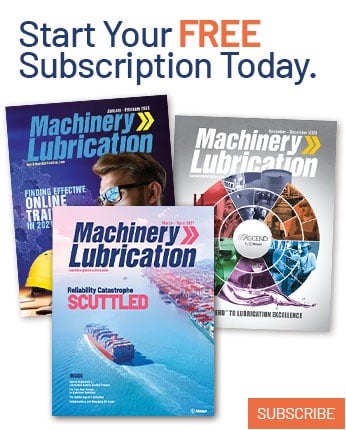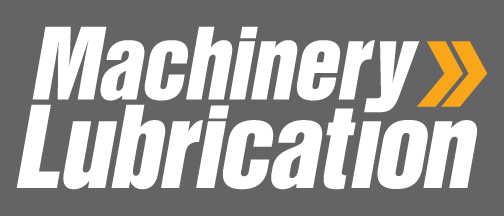
In heavy-duty industries where equipment reliability and longevity are non-negotiable, lubrication practices can make or break a plant’s performance. In 2015, one global manufacturer of off-road mobility systems faced recurring equipment failures and rising oil consumption. Years of inconsistent lubrication practices had taken a toll, leading to cross-contamination, lubricant and machine degradation, and premature component wear. To reverse this trend, the organization partnered with VAS Tribology Solutions and Noria Corporation to implement a structured lubrication excellence program. What followed was a multi-phase transformation that cut oil usage by 41%, reduced lubricant variety by nearly two-thirds, and laid the groundwork for a culture shift grounded in lubrication best practices.
This article outlines how the company, supported by their partners, overcame key lubrication challenges and built a sustainable reliability program from the ground up.
Identifying the Problem
Despite having launched a comprehensive reliability-centered maintenance (RCM) initiative in 2013, the company hadn’t yet integrated lubrication into its strategic framework. This gap became increasingly apparent as lubrication-related issues grew. Exposure to environmental contaminants, improper lubricant storage, and mixing of incompatible oils contributed to frequent equipment failures and escalating lubricant costs. The situation came to a head in 2015 when the organization’s reliability team attended the Reliable Plant Conference and began discussions with Noria to develop a holistic lubrication strategy.
Benchmarking the Program
Noria began with a benchmark assessment, evaluating six core areas: lubricant selection, reception and storage, lubricant handling/application, contamination control, lubricant analysis/condition monitoring, and environmental disposal – commonly referred to by Noria as their ASCEND methodology. The resulting ASCEND score of 35% highlighted serious gaps but also clarified the path forward.


Many initial fixes were relatively straightforward and inexpensive — such as improving labeling and storage container hygiene — providing quick wins that helped build momentum for deeper changes. These “low-hanging fruit” addressed obvious inefficiencies while setting the stage for a more comprehensive overhaul.
Engineering the Solution
The next phase focused on engineering design. Here, Noria and the company conducted a detailed review of all lubrication points across equipment and developed precise lubrication routes, procedures, and changeout intervals. These were consolidated into a master Lubrication Program Workbook that served as the backbone of implementation.

In parallel, a dedicated lubrication storage and handling room was designed — the first in the region built to international standards of hygiene, cleanliness, and safety. This facility featured designated storage for each lubricant, clear visual indicators using a customized, color-coded Lubricant Identification System (LIS), and standardized procedures for every handling task. Transfer containers were hermetically sealed, grease guns were color-matched to avoid confusion, and portable oil filter carts were assigned to each lubricant type to eliminate the risk of cross-contamination

From Plans to Practice
The implementation phase saw best practices move from paper to the plant floor. Lubrication hardware was upgraded extensively: drum vents were outfitted with proper desiccant breathers, explosion-proof lighting and smoke detection systems were installed, and spill containment zones were established. Semi-automatic drum handlers helped reduce spillage and the risk of personnel injury during fluid transfers.

To ensure consistency, each lubricant was stored in a dedicated container and assigned a specific filter cart. LIS labels were applied to drums, containers, machines, and filter carts — a simple but powerful tool that eliminated one of the organization’s most persistent issues: lubricant cross-contamination. Each step of the workflow — from receipt to application — was re-engineered around cleanliness, traceability, and control.
Smarter Sampling and Analysis
A major focus of the program was improving oil analysis practices. The company adopted better oil-sampling protocols, using drop-tube vacuum extraction to minimize contamination risk. Sampling schedules were based on a blend of OEM recommendations, asset criticality, and historical failure patterns.
Samples were analyzed at an ISO 9001/IEC 170025:2005-certified lab, with results reviewed by in-house reliability engineers who determined follow-up actions such as oil changes, filtration, or continued service. The company even co-developed a custom oil analysis report format with the lab to better align with decision-making needs. Over time, this report became the central tool in determining lubricant actions, replacing guesswork with evidence-based maintenance.
Hardware Enhancements That Drove Results
To increase visibility and control at the equipment level, the company introduced several strategic hardware upgrades. Bottom Sediment and Water (BS&W) bowls allowed technicians to quickly spot water and debris before it could cause damage. Condition Monitoring Pods (CMPs) gave immediate visual feedback on oil level, color, aeration, wear debris and other indicators. By spotting problems early, technicians could intervene before failures occurred.
Desiccant and non-desiccant breathers were deployed across vulnerable equipment, protecting systems from both particulate and moisture contamination. Quick-connect fittings enabled online filtration without opening systems, reducing contamination risk during maintenance.
Together, these upgrades created a closed-loop lubrication environment, where contamination risks were minimized, and condition monitoring was integrated directly into day-to-day operations.
Bringing Capabilities In-House
To further improve responsiveness and reduce their dependence on third-party labs, the company built its own in-house oil laboratory. The lab was equipped with a digital viscometer and a particle counter, enabling real-time assessments of oil condition. The financial payoff was immediate: the lab reduced outside testing costs by roughly $3,000 per month, particularly for particle counting.
More importantly, it gave maintenance teams fast access to critical data — a major advantage in high-tempo production environments where downtime is costly and is made even more so when waiting for outside oil analysis to determine problems.
Training: The Cultural Backbone
No technical program succeeds without a skilled and engaged workforce. The company recognized this early and invested heavily in training across all levels of their team.
Reliability engineers earned Level I certifications in Machine Lubrication Technician and Machine Lubricant Analyst through the ICML after participating in Noria trainings. Nearly 60 engineers and managers completed these on-site trainings, helping get everyone on the same page and embed best practices within their ranks. Meanwhile, over 500 technicians were trained using Noria’s video series on lubrication fundamentals, with reinforcement provided by internal reliability engineers.
This three-tiered approach ensured that every person who touched lubrication tasks — from planning to execution — understood both the “how” and the “why.” It also reinforced accountability, empowering technicians and engineers to take ownership of outcomes.
Results That Speak for Themselves
Within just three years, the company had achieved impressive gains. Oil consumption dropped by 41%. The number of lubricant types in use fell from 104 to 39 — a significant simplification that improved control without violating OEM requirements. Oil cleanliness also improved dramatically: gear oil ISO codes dropped from 26/25/21 to 21/18/13, while hydraulic oil cleanliness moved from 23/21/14 to 18/17/12.
Lube rooms that once posed contamination risks were transformed into clean, world-class facilities. Filtration, sampling and handling processes were fully standardized. Lubrication key performance indicators (KPIs) were established and tracked, creating a closed loop of accountability and continuous improvement.
These weren’t just technical improvements — they signaled a deeper cultural change. What began as a project had evolved into a paradigm shift: teams no longer viewed lubrication as a chore, but as a critical enabler of equipment reliability and plant performance.
The Drivers Behind the Change
Several key factors made this transformation successful. Executive support was unwavering, with leadership recognizing that lubrication had to be prioritized. The implementation was handled not by outside project managers but by a dedicated internal team of reliability engineers, assisted by predictive maintenance technicians. Training and change management were ongoing and embedded into every phase of the program.
Most importantly, the workforce was willing to change. From the shop floor to senior leadership, there was a shared commitment to learning, improving, and doing things right. That mindset turned ambitious goals into achievable milestones — and ultimately, sustainable gains.

A Model for Others
The company’s journey is far from over. Future targets included an additional 10% reduction in oil consumption and achieving ISO cleanliness levels of 16/13/09 for hydraulic oils and 19/17/14 for gear oils. Yet, even in its current form, the program stands as a model for any organization seeking to move from reactive maintenance to proactive, data-driven reliability.
By combining structured planning, technical training, and cultural commitment, the company proved that world-class lubrication is not out of reach — it’s the result of deliberate effort and expert guidance.
The team credits their success to Noria and VAS Tribology Solutions, whose leadership helped unlock the full potential of lubrication as a pillar of reliability.


.jpeg)

